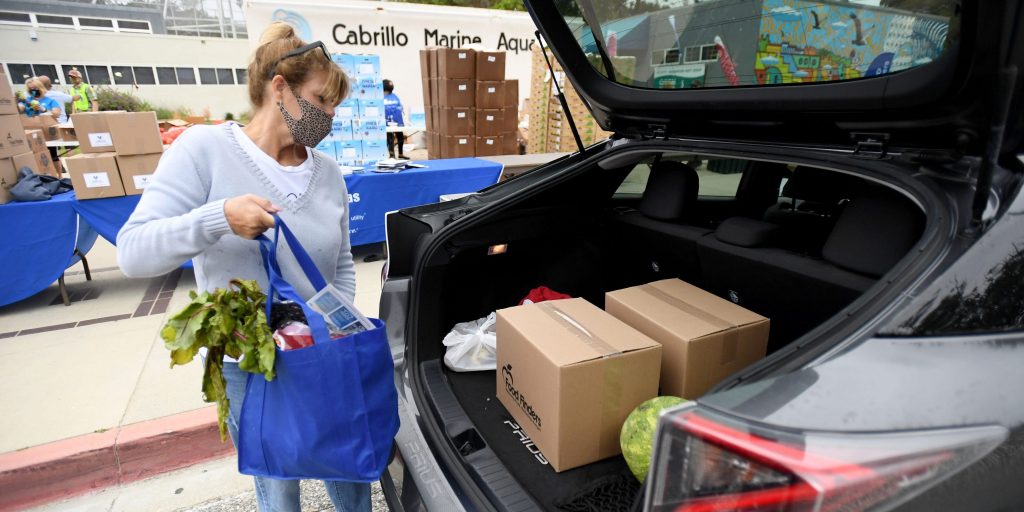
Photo by Brittany Murray/MediaNews Group/Long Beach Press-Telegram via Getty Images
- Hunger rates in the US have significantly dropped following increased federal aid in recent months.
- Census data found the percentage of adults facing food insecurity dropped from 11% in March to 8% last month.
- "Money helps," one economist told Politico: "We're continuing to see improvement."
- See more stories on Insider's business page.
The percentage of Americans facing hunger reached its lowest level yet last week since the pandemic began last March, suggesting direct federal aid has meaningfully helped families survive the coronavirus crisis, bolstering Democrats' push for another expensive spending package on the horizon.
Data from the US Census Bureau released last week shows the percentage of US adults living in households that sometimes or often did not have enough to eat shrunk from 11% in March to around 8% late last month.
Census data from April also showed a decline in food insecurity rates right around the time millions of Americans began receiving direct stimulus checks from the federal government in mid-March. In just two weeks, hunger rates in the country dropped nearly 18%.
Last week's data suggests that the downward trend in food insecurity is holding, following two rounds of federal stimulus in the last six months.
In December, Congress passed a $900 billion spending package that included $600 stimulus checks and $300 in added weekly unemployment benefits. Then, in March, the government passed the $1.9 trillion American Rescue Plan, which authorized $1,400 stimulus payments for most taxpayers and an expansion of several federal aid programs.
"Money helps," Diane Whitmore Schanzenbach, an economist and director of the Institute for Policy Research at Northwestern University, told Politico. "We're continuing to see signs of progress. That's exciting. That's good news," Whitmore Schanzenbach, who has been tracking hunger rates over the past year said.
Since the pandemic began, the Census Bureau has been conducting surveys to track how Americans are faring when it comes to issues like debt, rent payments, and hunger. It is likely still too early to know how much of the decline in hunger rates have been caused by federal aid versus a bettering economy, but economists have said previous stimulus checks also resulted in less hunger, according to Politico.
In its 2020 Household Pulse Survey, the Census Bureau found that 80% of Americans who had received a stimulus check last spring spent it on food.
